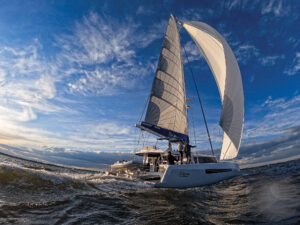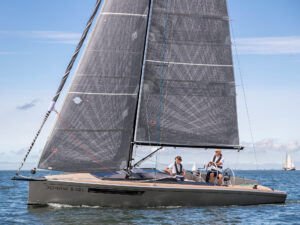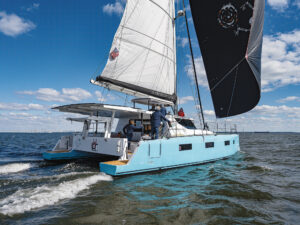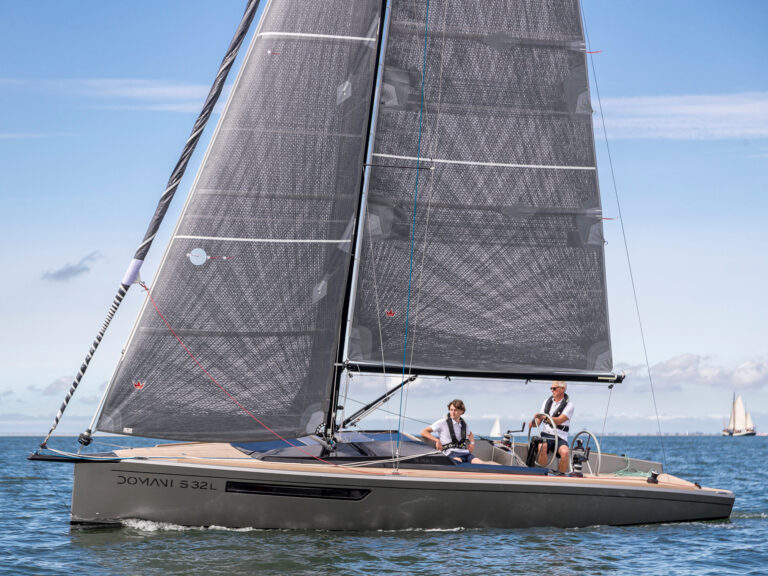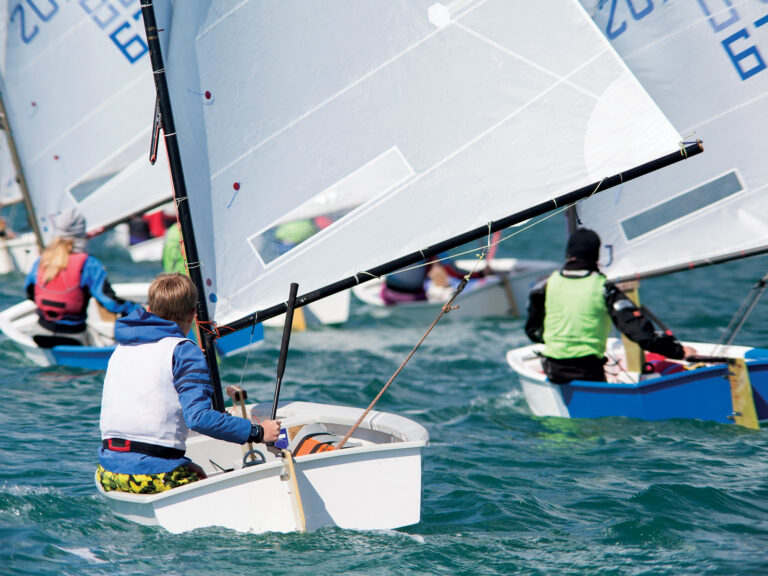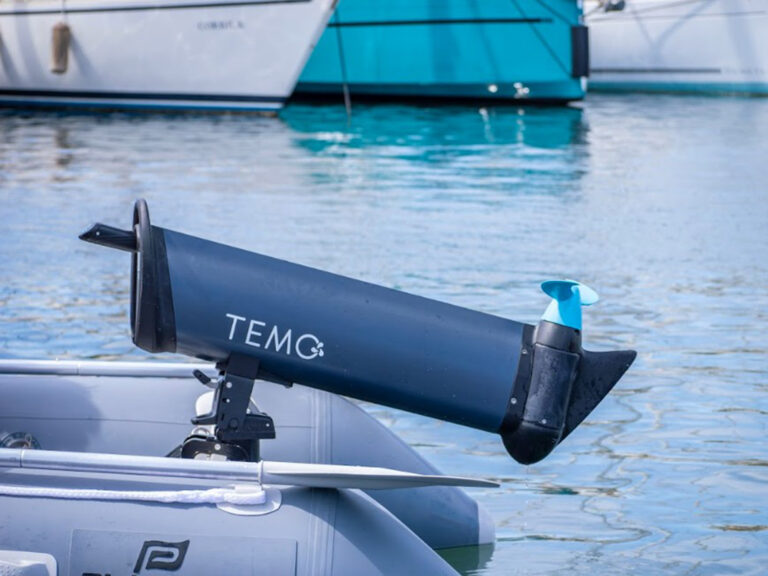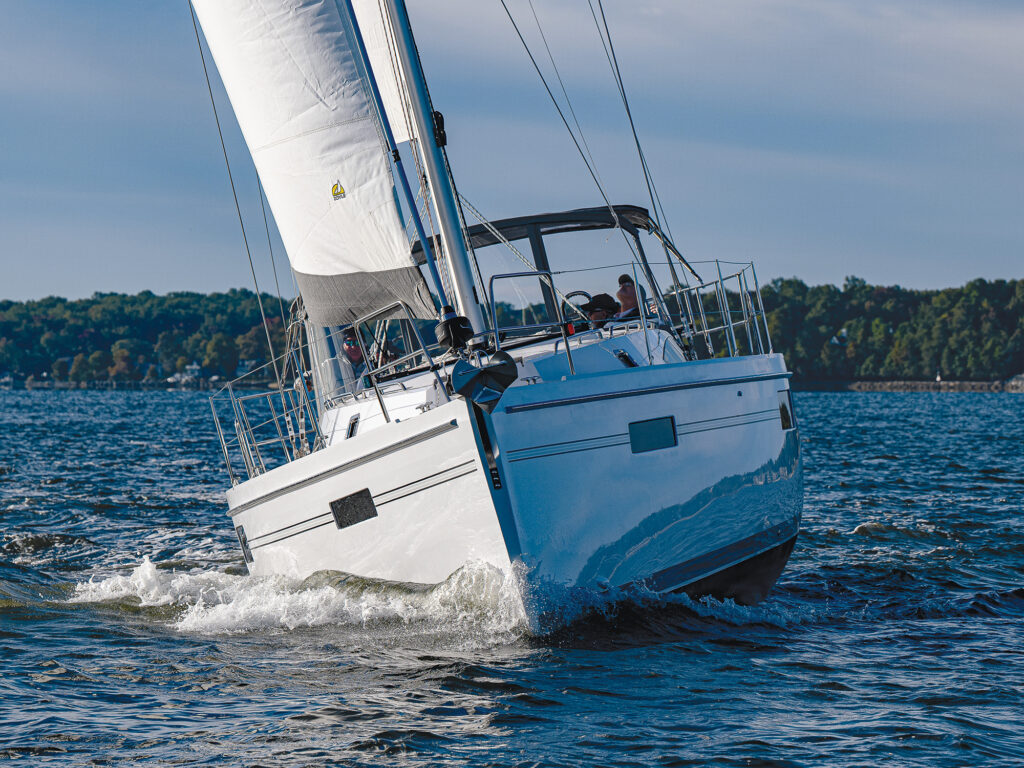
In the not-so-distant past, the top of the Catalina Yachts’ organizational chart listed two driving forces: owner Frank Butler and chief designer Gerry Douglas. Sadly, Butler died several years ago; Douglas is now enjoying a well-deserved retirement. As a brand, Catalina is still producing fine cruising boats. It’s one of the last of the major American production-boat builders to do so.
For the 2025 Boat of the Year competition, from the new 6 Series line, the company entered a pair of nominees: the Catalina 356 and the Catalina 426 (formerly the Douglas-designed 355 and 425, respectively). The 6 Series collection includes a quintet of revamped and reimagined yachts—a collaborative result of in-house R&D with input from previous owners—ranging from 33 to 45 feet. The 446 is now the company’s flagship.
These boats share a host of features from dependable marine suppliers, including an entire new spar and standing rigging package from Selden that reduces weight aloft and promotes tighter sheeting angles; a custom, slippery, shoal-draft MarsKeel bulb keel that replaces the previous wing keel (a fin-keel option is also available); an Edson steering pedestal that promotes better control and ergonomics; and a standard Sensar Marine boat-monitor system.
Other across-the-board improvements include an upgraded construction laminate employing multiaxial fiberglass and reinforced carbon fiber in high-load areas (a balsa core is still utilized in the hull’s topsides, with a solid laminate below the waterline), an overhauled mainsheet arrangement for ease of trimming, and a larger Group 31 starting battery as well as new diesel-heater options.
Let’s start with the larger of the duo: the 426, a fully found ocean cruiser. A 42-footer has always been a sweet spot for Catalina. An earlier Catalina 42, launched in 1988, was wildly successful, with a production run of more than 1,000 vessels. Douglas took another swing at the segment in 2015 with the 425, a rather wholesome design that eschewed popular trends such as hull chines, plumb bows and drop-down transoms. To my eye, the profile remains quite fetching, with a series of hull windows and a pretty, understated sheerline that matches well with the slightly sloping, low-slung cabin top. The cockpit is spacious, with a central table and twin wheels that have space between them to access the swim platform aft.
Down below, the layout is traditional, with an en suite forward stateroom, a roomy salon with a fixed settee to port facing a set of chairs with a central table to starboard, a nice galley and navigation station flanking the companionway, and a double-berth stateroom aft.
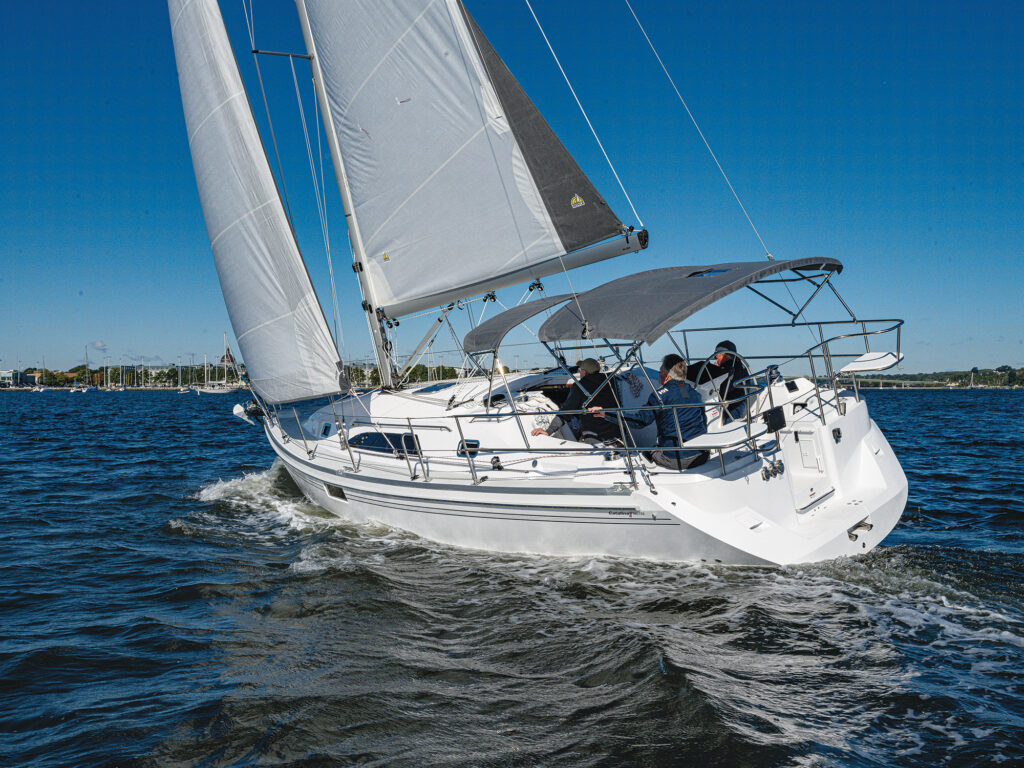
The 356, on the other hand, has a single Lewmar folding wheel in the cockpit, and a similar layout to its larger sibling, just conducted on a smaller scale. The furniture and joiner work in both boats is a handsome blend of teak and maple, and equally inviting.
We had the opportunity to sail both of these boats on consecutive days this past fall on Chesapeake Bay in ideal conditions: 12 to 14 knots of fresh northerly winds. I’ve always considered Catalinas to be fine performers under sail, and the 6 Series boats did nothing to change that opinion. On the 426, the Doyle sail package includes an in-mast furling mainsail and a self-tacking jib—a simple and effective sail plan. There’s no traveler, but the double-ended mainsheet is a solid alternative that allows good control of the main, especially when jibing. There are good sight lines when driving, particularly when steering from leeward, with a nice view of the telltales. Upwind, the 426 was fast and weatherly, making a noteworthy 7.2 knots. At one point, I ducked below, where all was peaceful and quiet, with a cool vista of the sea rushing past the hull windows.
The 356 was also a blast to steer. By coincidence, the new Jeanneau 350 was also conducting sea trials at the time, and we briefly were able to line up with it while closehauled. Considering that the 350 was outfitted with its high-performance sail and rigging package, the Catalina acquitted itself quite well. Trucking along at just over 6 knots, the 356 was slightly lower but just as quick. You can’t ask much more from a versatile little cruiser.
Douglas once told me that, as a designer, one of his goals was to create boats “without bad habits.” It’s safe to say that he achieved that ambition, with the sweet-sailing original lines of predecessors now transferred to the 356 and 426. And with the entire packages overhauled (with some significant weight savings in the process), for some past and future Catalina owners, the marriage of the old and the new might prove irresistible. Consider it the best of both worlds.
CW editor-at-large Herb McCormick was a 2025 Boat of the Year judge.
Take the next step
Price: $284,000 (356); $483,000 (426)
Contact: catalinayachts.com

